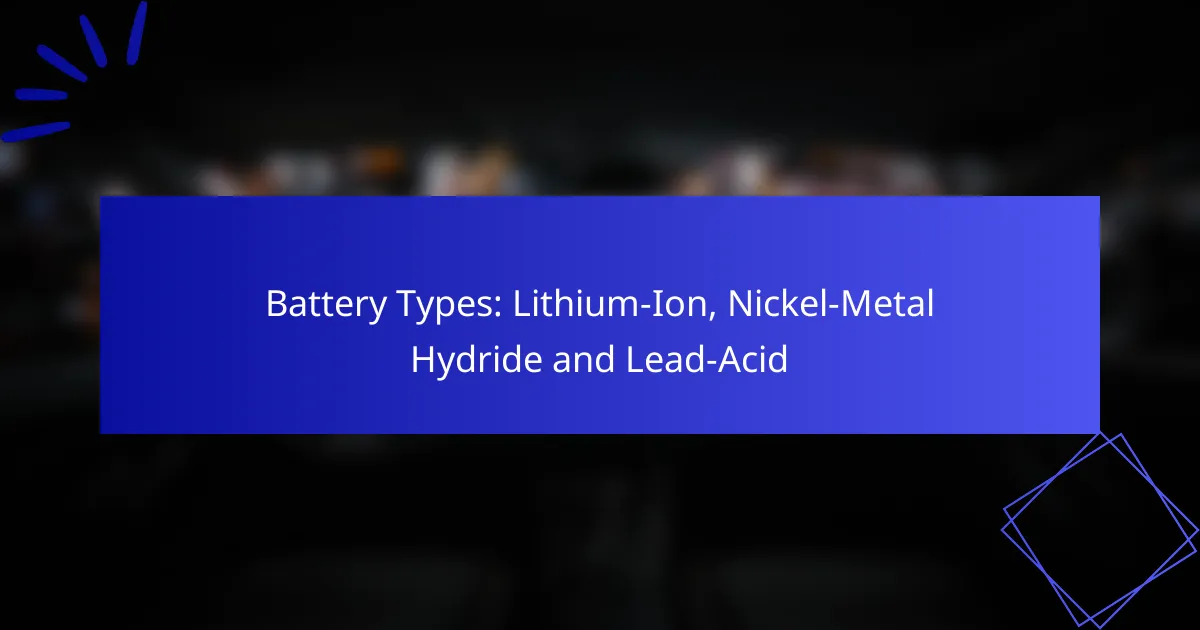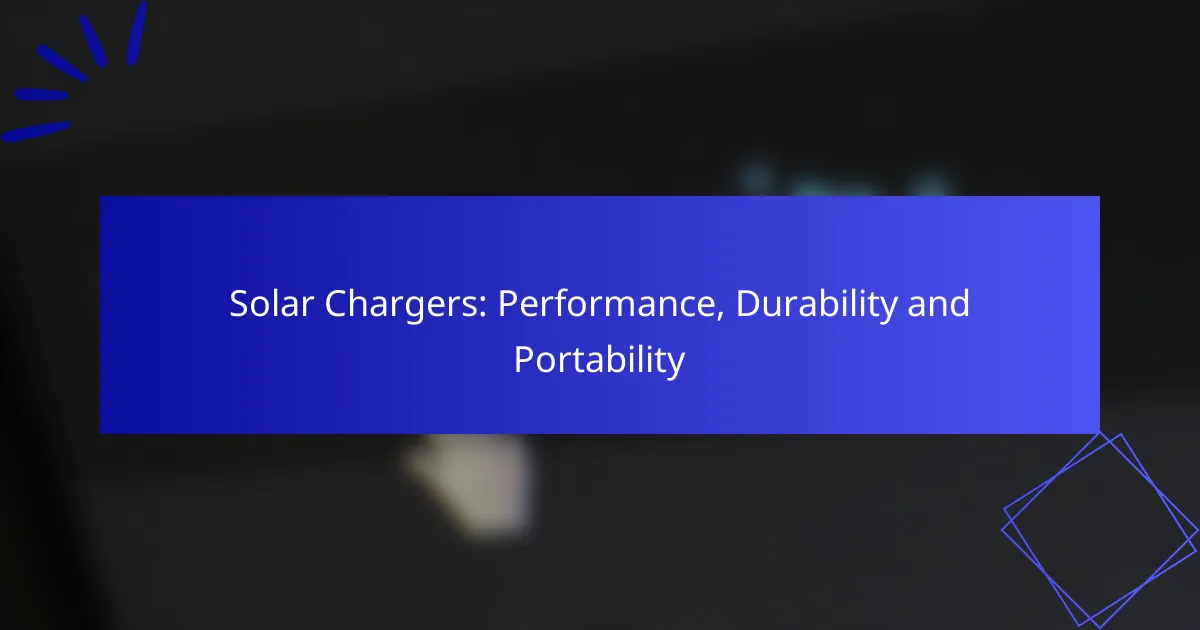When selecting a battery, it’s essential to understand the differences between Lithium-Ion, Nickel-Metal Hydride (NiMH), and Lead-Acid batteries. Each type offers distinct advantages in terms of energy density, lifespan, and cost, making them suitable for various applications. By evaluating your specific energy needs and environmental considerations, you can make an informed decision on the best battery for your requirements.
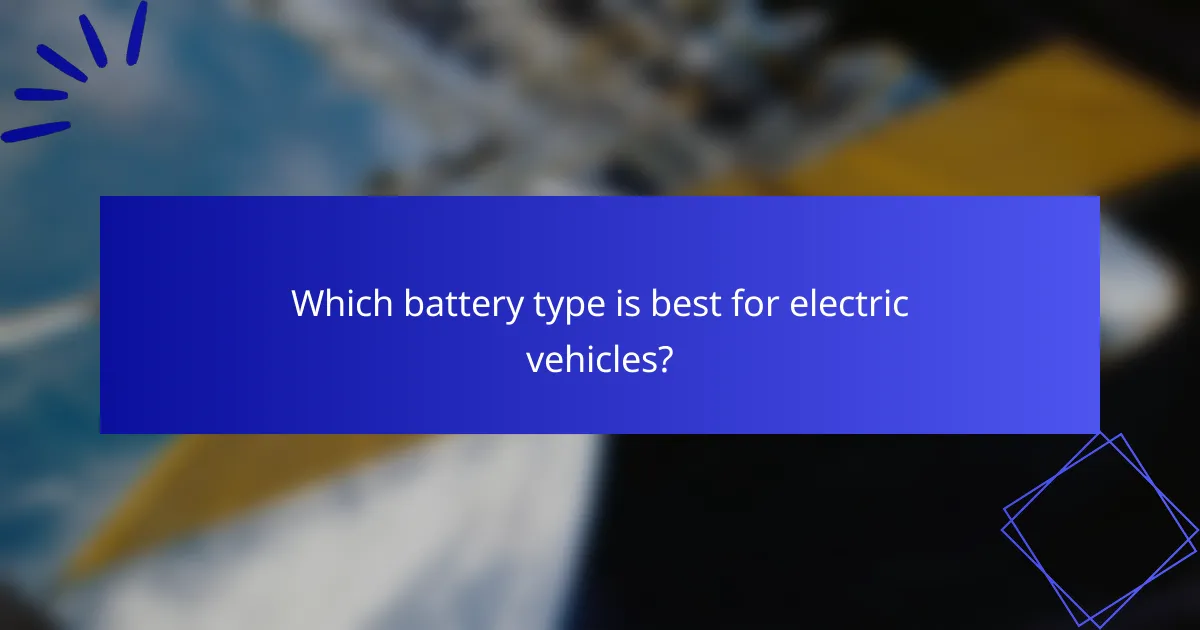
Which battery type is best for electric vehicles?
Lithium-ion batteries are generally considered the best choice for electric vehicles due to their high energy density, efficiency, and longer lifespan. They provide a good balance between performance and cost, making them the preferred option for most manufacturers and consumers.
Lithium-Ion for range and efficiency
Lithium-ion batteries excel in providing a long driving range and high efficiency, which is crucial for electric vehicles. They typically offer energy densities ranging from 150 to 250 Wh/kg, allowing vehicles to travel further on a single charge.
These batteries charge quickly, often reaching 80% capacity in under an hour with fast chargers. However, they can be sensitive to temperature extremes, which may affect their performance and lifespan.
Nickel-Metal Hydride for hybrid vehicles
Nickel-metal hydride (NiMH) batteries are commonly used in hybrid vehicles due to their durability and ability to handle high charge and discharge rates. They generally have lower energy densities, around 60 to 120 Wh/kg, compared to lithium-ion batteries, but they are more tolerant of temperature variations.
While they are less efficient than lithium-ion batteries, NiMH batteries are cost-effective and have a longer cycle life, making them suitable for applications where weight and space are less critical.
Lead-Acid for cost-effective solutions
Lead-acid batteries are the most affordable option for electric vehicles, making them appealing for budget-conscious consumers. They are commonly used in smaller electric vehicles and applications where weight is not a primary concern.
These batteries have lower energy densities, typically around 30 to 50 Wh/kg, and are heavier than other types. While they are less efficient and have shorter lifespans, their low cost and ease of recycling make them a viable choice for certain applications.
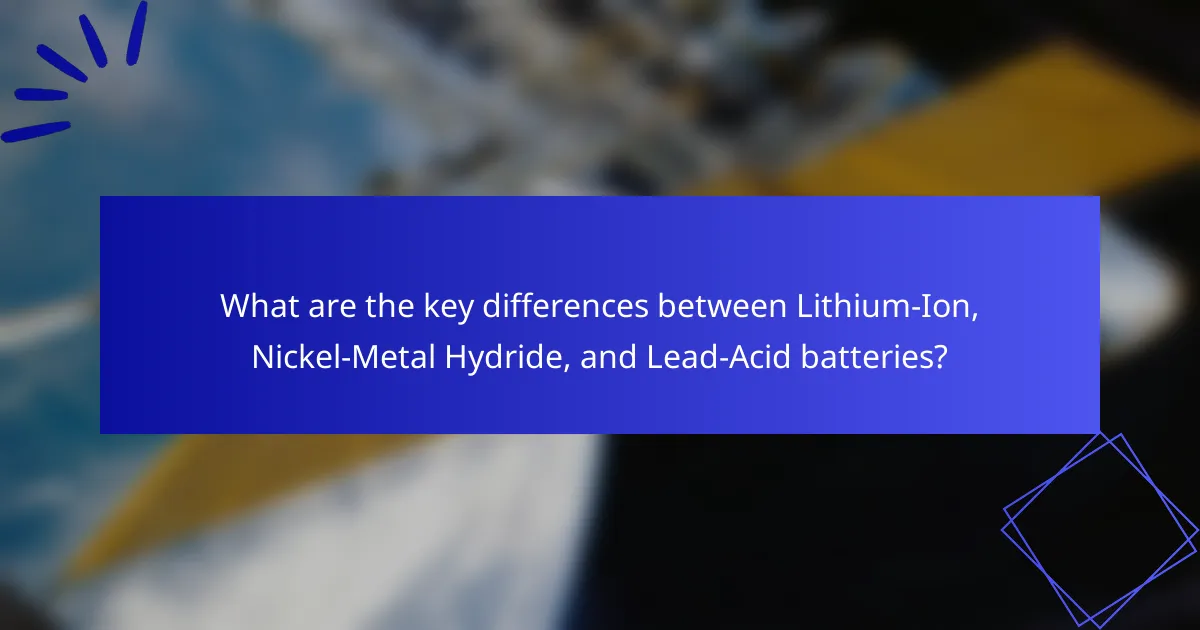
What are the key differences between Lithium-Ion, Nickel-Metal Hydride, and Lead-Acid batteries?
Lithium-Ion, Nickel-Metal Hydride (NiMH), and Lead-Acid batteries differ primarily in energy density, cycle life, and cost. Understanding these differences can help you choose the right battery type for your specific needs.
Energy density comparison
Lithium-Ion batteries have the highest energy density among the three, typically ranging from 150 to 250 Wh/kg. This means they can store more energy in a smaller and lighter package, making them ideal for portable electronics and electric vehicles.
Nickel-Metal Hydride batteries offer moderate energy density, usually between 60 to 120 Wh/kg. They are commonly used in hybrid vehicles and consumer electronics but are bulkier compared to Lithium-Ion options.
Lead-Acid batteries have the lowest energy density, generally around 30 to 50 Wh/kg. While they are heavier and less efficient, they are widely used in automotive applications due to their reliability and low cost.
Cycle life differences
Lithium-Ion batteries typically have a cycle life of 500 to 1,500 charge cycles, depending on usage and conditions. This longevity makes them suitable for applications where frequent charging is necessary.
Nickel-Metal Hydride batteries usually last for about 300 to 500 cycles. Their cycle life can be affected by temperature and charging practices, so proper care is essential to maximize their lifespan.
Lead-Acid batteries generally have a shorter cycle life, ranging from 200 to 300 cycles. They are best suited for applications where deep cycling is not required, such as starting engines.
Cost and availability
Lithium-Ion batteries tend to be the most expensive, often costing several hundred dollars per kWh. However, their efficiency and longevity can offset the initial investment over time.
Nickel-Metal Hydride batteries are moderately priced, typically ranging from $100 to $200 per kWh. They are widely available and often used in consumer electronics and hybrid vehicles.
Lead-Acid batteries are the most affordable, generally costing around $50 to $100 per kWh. Their low price and availability make them a popular choice for automotive and backup power applications.

How do I choose the right battery for my application?
Choosing the right battery involves understanding your specific energy needs, lifespan expectations, and environmental considerations. Each battery type—lithium-ion, nickel-metal hydride, and lead-acid—has unique characteristics that make it suitable for different applications.
Consider energy needs
Start by assessing the energy requirements of your application. Lithium-ion batteries are ideal for high-energy demands, such as in electric vehicles and portable electronics, due to their high energy density. Nickel-metal hydride batteries are often used in hybrid vehicles, while lead-acid batteries are commonly found in automotive and backup power applications.
Determine the voltage and capacity needed for your device. For example, if you need a battery that can deliver around 12V for a car, a lead-acid battery might be the most cost-effective choice, while a lithium-ion option could provide longer run times and lighter weight.
Evaluate lifespan and maintenance
Lifespan and maintenance are critical factors in battery selection. Lithium-ion batteries typically last longer, with lifespans of several years and minimal maintenance. In contrast, nickel-metal hydride batteries may require more frequent replacement, and lead-acid batteries often need regular maintenance to ensure optimal performance.
Consider the total cost of ownership, including replacement frequency and maintenance needs. For instance, while lithium-ion batteries may have a higher upfront cost, their longevity can make them more economical over time compared to lead-acid batteries, which may need to be replaced every few years.
Assess environmental impact
Environmental considerations are increasingly important when choosing a battery. Lithium-ion batteries, while efficient, have concerns related to mining and disposal. Nickel-metal hydride batteries are less harmful but still pose recycling challenges. Lead-acid batteries are recyclable but can be hazardous if not disposed of properly.
Research local regulations regarding battery disposal and recycling. Many regions have specific guidelines for handling lead-acid batteries due to their toxic components, while lithium-ion batteries may require special recycling processes. Opting for batteries with better recycling programs can help mitigate environmental impact.

What are the advantages of Lithium-Ion batteries?
Lithium-Ion batteries offer several advantages, making them a popular choice for various applications. Their high energy density, low self-discharge rate, and long cycle life contribute to their efficiency and reliability in powering devices.
High energy density
Lithium-Ion batteries are known for their high energy density, which means they can store a significant amount of energy relative to their weight. This characteristic allows devices to operate longer without needing frequent recharges, making them ideal for portable electronics and electric vehicles.
For example, a typical Lithium-Ion battery can provide around 150-200 Wh/kg, compared to Nickel-Metal Hydride batteries, which usually offer around 60-120 Wh/kg. This efficiency translates to lighter batteries and longer usage times for devices.
Low self-discharge rate
Another advantage of Lithium-Ion batteries is their low self-discharge rate, which means they retain their charge for extended periods when not in use. This feature is particularly beneficial for devices that are used intermittently, as it reduces the need for frequent recharging.
Typically, Lithium-Ion batteries lose about 2-3% of their charge per month, while other battery types can lose significantly more. This characteristic ensures that devices remain ready for use when needed, enhancing user convenience.
Long cycle life
Lithium-Ion batteries have a long cycle life, often lasting several hundred to over a thousand charge cycles before their capacity significantly diminishes. This longevity makes them a cost-effective choice in the long run, as users do not need to replace them as frequently.
In practical terms, a well-maintained Lithium-Ion battery can last 3-5 years or more, depending on usage patterns and charging practices. Proper care, such as avoiding deep discharges and high temperatures, can further extend their lifespan.
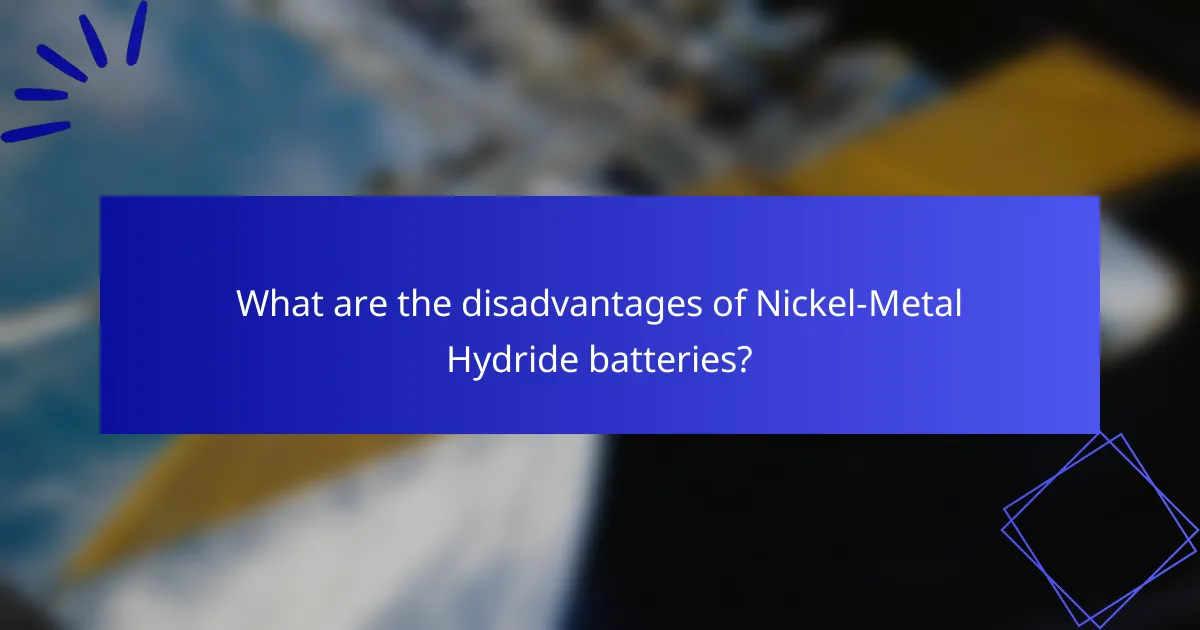
What are the disadvantages of Nickel-Metal Hydride batteries?
Nickel-Metal Hydride (NiMH) batteries have several disadvantages that can impact their performance and usability. These include lower energy density, a higher self-discharge rate, and a limited temperature range, which can affect their efficiency in various applications.
Lower energy density
NiMH batteries typically have a lower energy density compared to lithium-ion batteries. This means they store less energy per unit weight or volume, making them bulkier for the same amount of power. For example, while lithium-ion batteries can achieve energy densities of around 150-250 Wh/kg, NiMH batteries usually range from 60-120 Wh/kg.
This lower energy density can be a significant drawback in applications where space and weight are critical, such as in electric vehicles or portable electronics. Users may need to consider larger or heavier battery packs to achieve the same performance.
Higher self-discharge rate
NiMH batteries have a higher self-discharge rate than other battery types, meaning they lose charge more quickly when not in use. This can lead to a situation where the battery is significantly depleted after just a few weeks of storage, which is particularly inconvenient for devices that are not used regularly.
In practical terms, this means that users may need to recharge NiMH batteries more frequently, which can be a hassle and may reduce the overall convenience of using these batteries in everyday devices.
Limited temperature range
NiMH batteries operate effectively within a limited temperature range, typically between 0°C and 40°C. Outside of this range, their performance can degrade, leading to reduced capacity and shorter lifespan. For instance, at very low temperatures, the battery may struggle to deliver adequate power, while high temperatures can increase the risk of overheating and damage.
When using NiMH batteries in extreme conditions, such as outdoor applications in cold climates or in high-heat environments, users should be cautious and consider alternative battery technologies that can better withstand these conditions.

What is the lifespan of Lead-Acid batteries?
The lifespan of Lead-Acid batteries typically ranges from 3 to 5 years, depending on usage and maintenance. These batteries are widely used in various applications, including automotive and backup power systems, and understanding their lifespan is crucial for effective planning and replacement.
Typical lifespan of 3-5 years
Lead-Acid batteries generally last between 3 to 5 years under normal operating conditions. Factors such as depth of discharge and charging cycles can significantly influence this lifespan. For instance, frequent deep discharges can shorten the battery’s life, while shallow discharges can extend it.
Factors affecting lifespan
Several factors can affect the lifespan of Lead-Acid batteries. Temperature plays a critical role; high temperatures can accelerate degradation, while very low temperatures can reduce capacity. Additionally, the frequency of charging and discharging cycles, as well as the quality of the charging system, can impact longevity.
Other factors include the battery’s design and the specific application. For example, batteries used in standby applications may last longer than those used in cyclic applications due to less frequent deep discharges.
Maintenance requirements
Proper maintenance is essential for maximizing the lifespan of Lead-Acid batteries. Regularly checking the electrolyte levels and ensuring they are topped up with distilled water can prevent damage. Additionally, keeping the terminals clean and free from corrosion helps maintain good electrical connections.
It’s also advisable to avoid deep discharges whenever possible and to use a quality charger that matches the battery’s specifications. Following these maintenance tips can help extend the battery’s operational life significantly.






